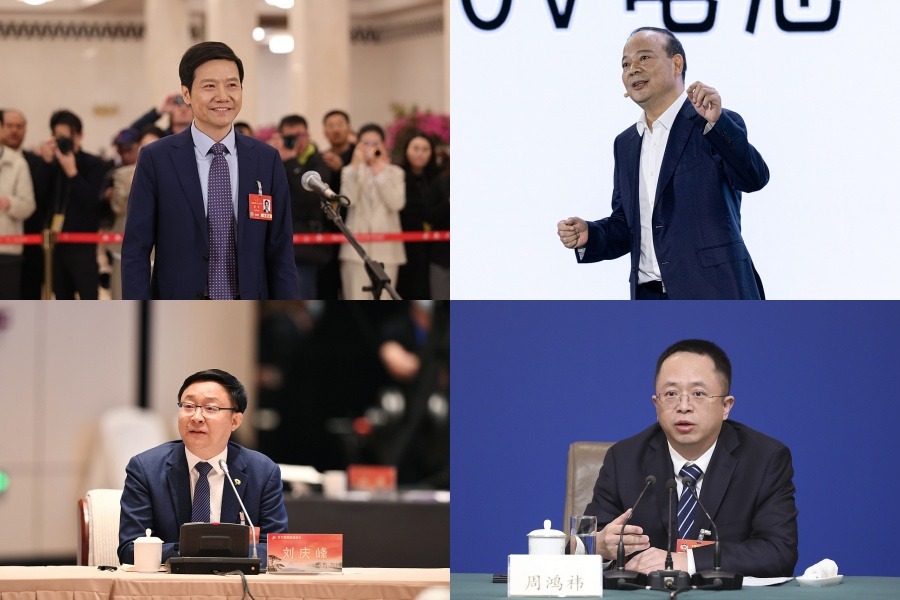Telecom firms scrambling to develop 6G

Chinese telecom companies are scrambling to deepen the research and development of 6G, as the world enters a crucial window of opportunity to identify potential technologies and formulate key standards for the next-generation wireless technology.
Amid the enthusiasm, 6G was highlighted in the Government Work Report for the first time this year. The report, delivered last week in Beijing at the opening meeting of the third session of the 14th National People's Congress, China's top legislature, said, "We will establish a mechanism to increase funding for industries of the future and foster industries such as biomanufacturing, quantum technology, embodied AI and 6G technology."
While there is still no universally accepted definition of the technology, 6G is expected to have far lower latency, higher speeds and more bandwidth than 5G. More important, 6G will be able to support the integration of space, air, terrestrial and maritime communication technologies, experts said.
China is aiming to commercialize 6G by around 2030.
Li Lecheng, Party secretary of the Ministry of Industry and Information Technology, said on Wednesday that more efforts are needed to accelerate the research and development of 6G technology and expand the large-scale application of 5G.
Zhang Chengliang, president of the China Telecom Research Institute, said, "It is of crucial importance for telecom carriers to pounce at the new opportunities of artificial intelligence and 6G to build a sound digital information infrastructure."
A subsidiary of China Telecom recently obtained a national invention patent for a key 6G satellite-terrestrial integration technology, laying a core technical foundation for building a fully connected "space-air-ground-sea" network in the future.
To promote satellite-terrestrial integration, China Telecom is leading the national "6G Satellite Communication Access and Networking Technology" project, proposing an approach that leverages ground network technology to drive the development of satellite communications.
Wang Zhiqin, head of the IMT-2030 (6G) Promotion Group, a government-affiliated flagship platform for promoting 6G and international cooperation in China, said the research for 6G technical standards will begin in June this year, with the technical research phase to be completed by 2027. The first version of the technical specifications for 6G technology standards is expected to be finalized by March 2029.
Li Fuchang, director of the wireless technology research center at the China Unicom Research Institute, said about 70 percent of the technologies used in 5G and 6G overlap. In light of this, China Unicom has proposed an integrated approach to advancing both 5G and 6G, driven by demand to guide 6G research and development.
To stay ahead in the 6G race, China Unicom has established a corporate 6G working group to strategically plan the 6G technology system. The company is coordinating efforts to promote integrated research on 5G advanced technology and 6G, systematically advancing studies on 6G vision, application scenarios, network architecture, key technologies, application ecosystems and demonstration projects.
Solid foundation
Wen Ku, chairman of the China Communications Standards Association, said, "The European Union, the United States, Japan, South Korea and other countries and regions have all initiated research on 6G, and China has unique strengths."
China has made remarkable strides in 5G infrastructure, which gives it an unparalleled edge in exploring 6G technology, he said.
"Advancing the use of 5G is like building a good bridge and road for 6G, and efforts to promote the large-scale application of 5G will lay a solid foundation for 6G development, which is still in the early stage," Wen said.
In July last year, a group of Chinese telecom engineers announced that they had established the world's first field test 6G network integrating communications and AI.
The experimental network has achieved remarkable improvements in key communication metrics, including capacity, coverage and efficiency, according to Zhang Ping, a Chinese Academy of Engineering academician and a professor at Beijing University of Posts and Telecommunications.
The network serves as a platform for institutions that are conducting theoretical research and initial verification of 6G pivotal technologies, and it effectively lowers the entry threshold for 6G research, making it more accessible for innovation, according to the team of engineers.



































